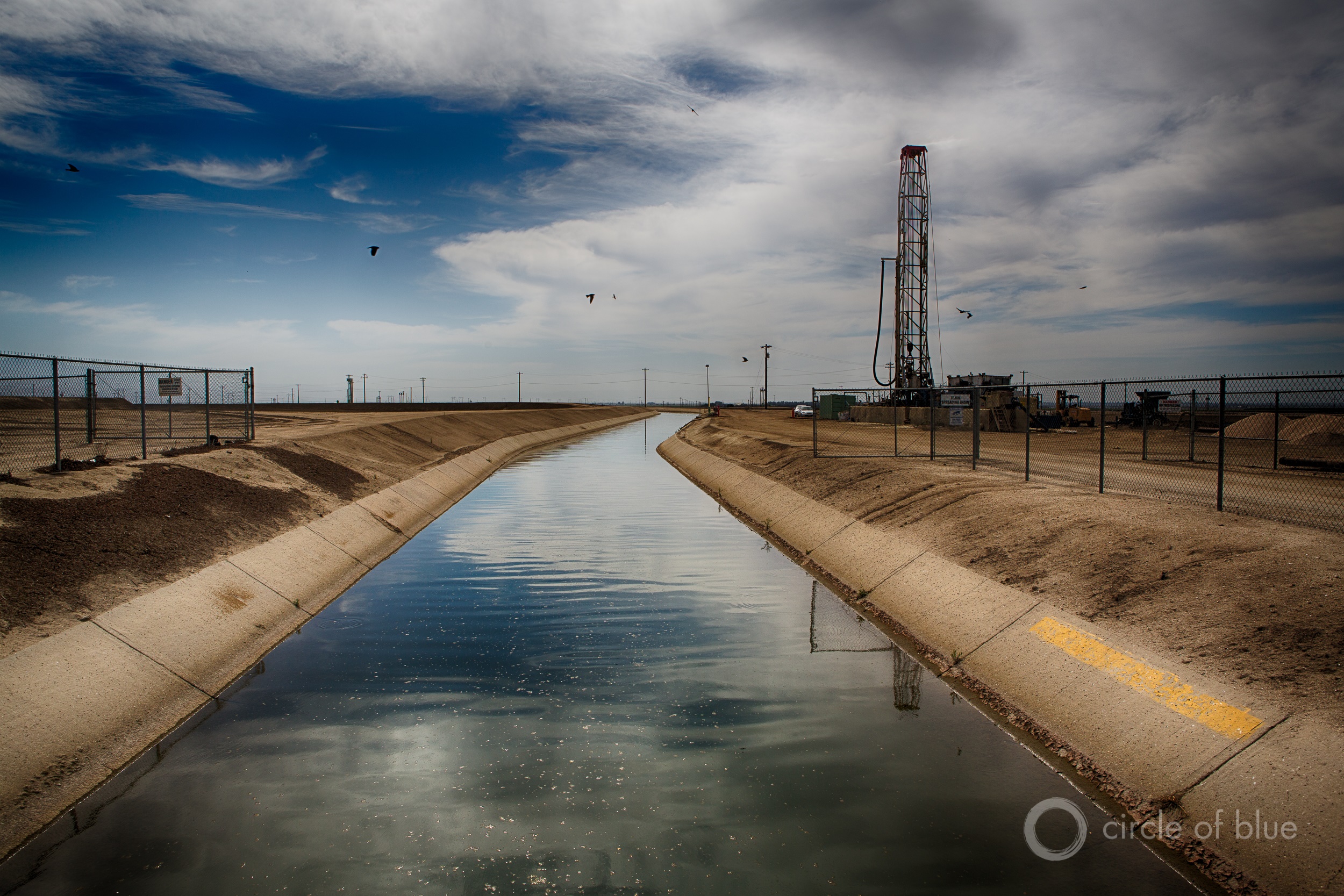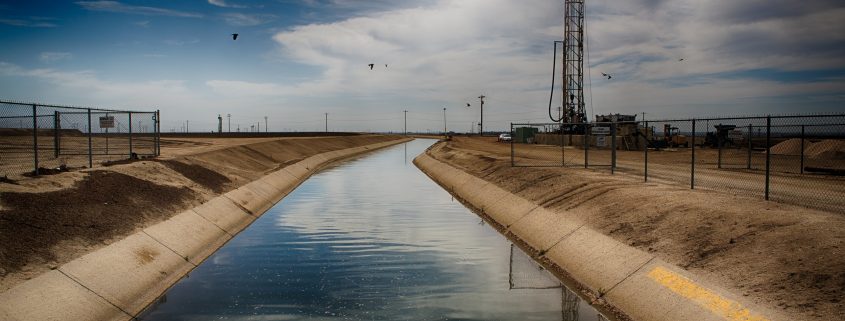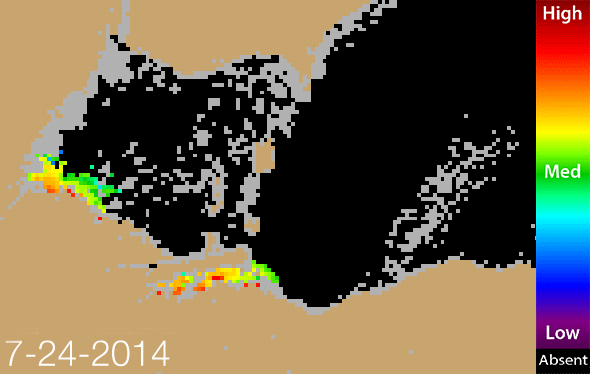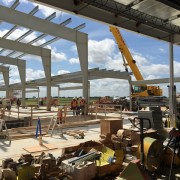Better Water Decisions in the Age of Deep Uncertainty
Year-old scientific society seeks new responses for an era of rapid change.

Water managers must use more sophisticated analysis as they plan for the uncertainty of the 21st century, argues a new scientific society. Photo © J. Carl Ganter / Circle of Blue
By Brett Walton, Circle of Blue
The old ecological and political order is crumbling. When calculations are complete, 2016 will be the hottest year on record, surpassing a mark set one year ago. The oceans are rising at an increasing rate. In the American West, it is too warm and dry this month for snow, delaying the accumulation of a natural water reserve that cities, farms, and fisheries rely on during the summer. Politics are no less turbulent. After the U.S. election, domestic regulations affecting energy development, infrastructure spending, and water supplies are in flux. Allies in the struggle to slow global carbon pollution ponder America’s commitment to the Paris Agreement, which went into effect earlier this month.
To navigate the peril, managers need to understand the concept of “deep uncertainty,” argues Robert Lempert, the president of the Society for Decision Making Under Deep Uncertainty, whose mission is to help leaders make better decisions for water, energy, and food systems in a time of rapid environmental and social change.
Uncertainty implies that managers know the potential outcomes of their actions and the probability that they occur. Think of flipping a coin. The result of any particular toss is unknown — but the potential outcomes and the probabilities are not. Fifty percent chance of heads, fifty percent chance of tails.
Formed last December after three years of workshops, the society holds its first official conference on November 16 and 17 in Washington, D.C.
Deep uncertainty acknowledges a dynamic system where inputs — such as rainfall or economic growth or regulations — are changing or unknown. Water utility plans, for instance. These documents often look decades ahead. Actions today — building a desalination plant or increasing the size of a reservoir — will resonate for a generation or more. The deep uncertainty method is about planning for multiple possible futures and finding comfort in complex decisions that may need to be revised.
“Even today, particularly consequential things can surprise you,” Lempert told Circle of Blue the day after Donald Trump was elected U.S. president.
Whatever the Future May Hold
Denver Water is one of the utilities that uses deep uncertainty tools in its planning. Laurna Kaatz, a climate scientist and Denver Water’s adaptation program manager, helped form the society and is one of its “practitioners” — those who make decisions at public agencies.
About one-third of society members are utility planners or managers, like Kaatz. The others are academics or they have a foot in both worlds. Their professional backgrounds are diverse: energy utilities, insurance groups, economists, computer modeling whizzes. The founding organizations include the World Bank, RAND Corporation, and TU Delft, a university in the Netherlands. Both Kaatz and Lempert, who is a scientist at the RAND Corporation, a research group that often advises the U.S. government, said the rainbow of expertise is fertile ground for new ideas. The group’s name springs from a talk by the Nobel Prize-winning economist Kenneth Arrow, Lempert said.
The society’s main objective is to develop tools for better decisions, especially for water. The old water planning model, Kaatz explained, was retrospective. It looked backward at demand and extended that line forward. Many utilities soon found that they had wildly overestimated. On a graph, these projections look like a porcupine: forecasted demand lines pointing sharply upward, like the quills, while actual demand is flat or slopes downward along the spine.
In the past utilities simply built bigger canals and larger reservoirs to buffer against drought. Now those options are rarely the first choice. They are costly and there is not enough water. “We need to be more clever,” Lempert says.
The deep uncertainty analysis unfurls in stages. First, a utility outlines a water supply plan. That plan is put to a stress test by running it through computer model simulations with various assumptions for rainfall, temperature, population growth, regulatory changes, and more. The simulations help identify the conditions under which the plan does not meet water supply targets. What if a there is a drought more severe than the worst on record? What if the economy tanks? How do urban development patterns influence demand? These simulations lead to scenarios, which describe potential future conditions. The UN climate panel does this for carbon emissions. Military leaders do this to test their response to conflict.
“We want to be prepared for the future as best as possible, whatever that future is,” Kaatz said. Scenario planning allows utilities to ask questions that, in the past, would have been viewed as unusual for a utility to consider. For Denver Water this is a series of social values questions. How will the relationship to water change? Will residents not want lawns? Will they demand more density and thus required less outdoor water?
Based on its deep uncertainty analysis, Denver Water is investigating storing water in aquifers for later recovery, Kaatz said. The utility had not considered this option before the analysis.
Lempert says that the deep uncertainty methods are not yet widespread among water utilities, but the ideas are gaining ground. He has worked with a diverse group: on Louisiana’s coastal restoration plan; on sea-level rise and saltwater intrusion with South Florida utilities; and on water supply plans for Southern California utilities.
Denver Water had its wakeup call in 2002 when a severe wildfire charred nearly 80,000 acres of forest above Cheesman reservoir, owned by the utility. The severity of the burn was the worst in seven centuries, according to a U.S. Forest Service assessment. When the rains returned, ash and debris were flushed into the city’s raw water supply. Denver Water spent $US 27 million to dredge two reservoirs and restore the watershed.
“We didn’t anticipate a drought and forest fire that bad,” Kaatz recalled. “It caused us to step back and say, ‘Let’s look into different approaches.’”
Given Denver’s experience, Kaatz wonders what leads utilities down a new path, whether calamity and crisis are necessary for managers to take action. A topic of conversation this week at the conference, no doubt.
Brett writes about agriculture, energy, infrastructure, and the politics and economics of water in the United States. He also writes the Federal Water Tap, Circle of Blue’s weekly digest of U.S. government water news. He is the winner of two Society of Environmental Journalists reporting awards, one of the top honors in American environmental journalism: first place for explanatory reporting for a series on septic system pollution in the United States(2016) and third place for beat reporting in a small market (2014). He received the Sierra Club’s Distinguished Service Award in 2018. Brett lives in Seattle, where he hikes the mountains and bakes pies. Contact Brett Walton








